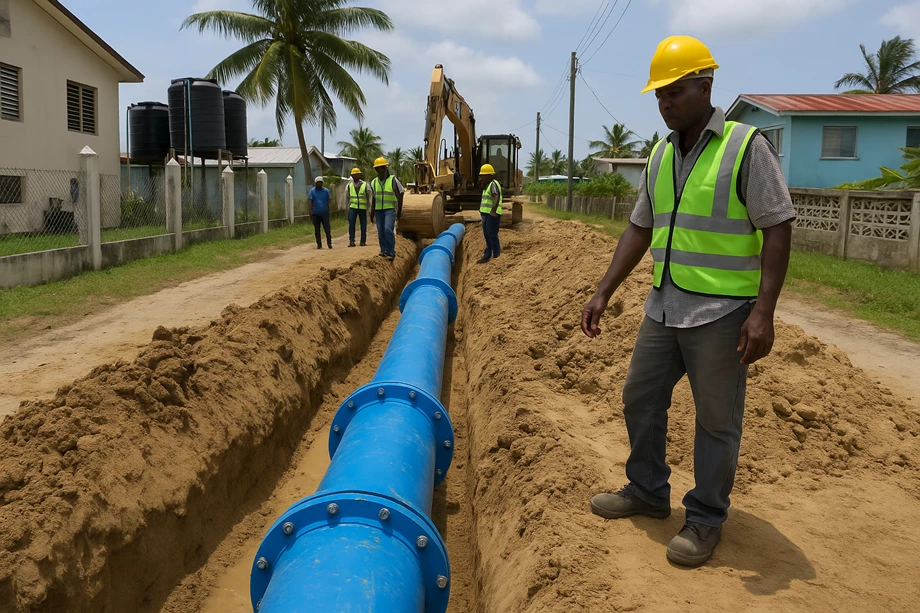Water Security Cuts Inflation Volatility And Risk Premium
Burundi secures $8.6m for climate-resilient water systems, linking food-price stability to macro credibility; agro-exports gain as KC1! and SB1! volatility meets improved yields; frontier risk proxy MSCIFM watches delivery metrics.

Burundi’s approval of a $8.6 million financing package for water security and climate resilience marks a pragmatic pivot from reactive stabilization toward targeted adaptation that can lift productivity, lower inflation volatility, and improve fiscal execution. With nominal GDP near $3.5 billion and public debt around 70% of GDP, macro space is tight; yet the highest-return investments are often those that reduce structural risk rather than chase short-cycle growth. Water infrastructure sits at this nexus. Agriculture accounts for roughly one-third of output and over 80% of employment, while food comprises the largest weight in the CPI basket.
Rainfall variability has historically translated into supply shocks and exchange-rate pressure, feeding double-digit inflation episodes. Channeling concessional capital into watershed rehabilitation, rural piped networks, small-scale irrigation, and climate-smart catchment management is therefore an anti-inflation strategy as much as a development one, flattening the pass-through from weather to prices and stabilizing household cash flows.
Mechanically, the package’s power lies in leverage and sequencing. Every dollar of concessional finance deployed into shovel-ready water assets can crowd in two to three dollars of co-financing once implementation capacity and procurement transparency are demonstrated. Prioritizing river-basin works that protect urban intakes, rehabilitate rural gravity schemes, and reduce non-revenue water can lift service reliability by 10–15 percentage points within two years. On the agricultural side, micro-irrigation and hillside terracing reduce yield volatility in smallholder beans, maize, tea, and coffee.
A one-tonne per hectare swing in staple output in a rain-dependent system can move food inflation by several percentage points; stabilizing yields narrows that distribution and compresses the risk premium embedded in local-currency yields. Because the financing is on soft terms, the debt-service profile remains manageable, especially if project design locks in operation-and-maintenance funding streams to avoid asset decay.
The macro and external-sector impacts accumulate through several channels. First, fewer climate-induced crop shortfalls reduce emergency imports of cereals and edible oils, easing pressure on the current account. Second, improved urban water reliability lowers diesel generator use for pumping and treatment, trimming energy imports. Third, healthier hydrology and reduced siltation extend the life of downstream assets, including small hydropower and municipal infrastructure, raising the economy’s effective capital stock. With headline inflation in the high-teens through much of the year, a credible water program that reduces food-price spikes can shave 2–3 percentage points off CPI within 24 months, provided fiscal slippage is contained. That disinflation, in turn, allows gradual normalization of local yield curves, inviting duration building by domestic banks and, over time, lowering the sovereign’s cost of capital relative to frontier peers tracked by MSCI Frontier Markets (MSCIFM).
Institutionally, the initiative’s governance design will determine whether the macro benefits materialize. Transparent procurement, independent technical audits, and geotagged progress monitoring are the hard safeguards that convert concessional promises into functioning pipes, canals, and terraces. Publishing quarterly execution dashboards and service-level indicators—coverage, continuity, quality, and affordability—creates a feedback loop that disciplines contractors and reassures financiers. Because climate resilience is multi-sectoral, aligning this program with public-health goals and education outcomes multiplies returns: fewer water-borne diseases free hospital capacity and raise labor participation, while reliable school water access boosts attendance, especially for girls. These outcomes are growth-relevant in an economy where human-capital constraints cap medium-term potential at 4–5%.
Markets will treat this as a credibility test rather than a headline number. The absolute $8.6 million size is small, but early wins—measurable reductions in non-revenue water, verified new household connections, stabilized dry-season flows, and documented declines in cholera incidence—can unlock additional tranches from development partners and catalyze private participation in ancillary services such as metering, leak detection, and community-scale solar pumping. For agro-exporters, water reliability and soil conservation reduce quality downgrades and improve volumes in coffee and tea, buffering earnings against global price cycles in ICE Coffee (KC1!) and ICE Sugar (SB1!) and supporting foreign-exchange receipts. Over a three-year horizon, a 5–7% uplift in agro-export volumes is plausible if climate-smart interventions reach critical mass in key catchments.
Forward validation should be unambiguous and time-bound. By end-2026, investors will look for rural and urban water coverage to rise by at least five percentage points, non-revenue water to fall below 35%, and food inflation volatility to narrow materially versus the 2018–2024 average. Concurrently, the primary deficit should improve by 1–2 percentage points of GDP as emergency imports and crisis responses recede. Meeting these markers would confirm that climate and water finance can compress Burundi’s risk premium, allow local yields to settle lower, and lift potential growth without destabilizing prices—turning a modest concessional envelope into a macro stabilizer with durable development dividends.




